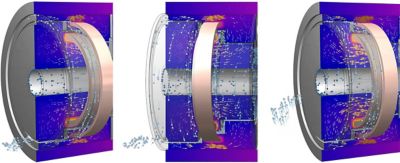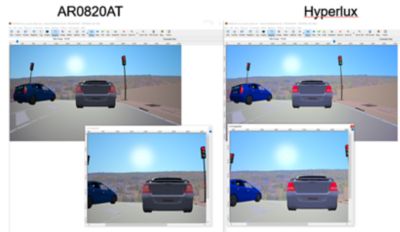-
-
Access Free Student Software
Ansys empowers the next generation of engineers
Students get free access to world-class simulation software.
-
Connect with Ansys Now!
Design your future
Connect with Ansys to explore how simulation can power your next breakthrough.
Countries & Regions
Free Trials
Products & Services
Learn
About
Back
Products & Services
Back
Learn
Ansys empowers the next generation of engineers
Students get free access to world-class simulation software.
Back
About
Design your future
Connect with Ansys to explore how simulation can power your next breakthrough.
Free Trials
ANSYS BLOG
November 15, 2023
How Simulation Helps Automotive Manufacturers Stay Current on Industry Trends
Everything we know about mobility is rapidly changing. Electrification and autonomous vehicles, as well as the connectivity and artificial intelligence (AI) that supports their operation, are disrupting an entire industry. At the center of all of this innovation is simulation. Not sure what’s next? Keep reading for insight on where we’re headed.
Charging into an All-Electric Future with Simulation
Despite optimistic projections, reluctance to electric vehicle (EV) adoption continues to be a challenge. The industry is seeing original equipment manufacturers (OEMs) push back EV targets as consumers grow more hesitant to own, with price and power delivery continuing to be two big barriers. Even if consumers can afford the purchase, how far will an EV take them if there’s not enough infrastructure in place to help recharge their batteries?
In the race toward greater efficiency, OEMs and top-tier automotive suppliers are looking to digital engineering and digital innovation to push the boundaries of their designs and evolve their electrification strategies faster. What’s different about EV tech, however, is the pathway to change.
Extending the range of a gas-powered vehicle can be as easy as upsizing the fuel tank. Increasing the range of an EV, however, is decidedly more complex. Adding a battery module or two can have an undesirable effect on vehicle design, as adjustments must be made to account for additional weight, electric motor size, and more electronics cooling.
“So, what does (optimization) mean to engineers working in the field?” asks Dr. Zed Tang, technical account manager and a subject matter expert on electrified powertrain at Ansys. “You can’t prototype enough or test enough to determine what that extra one-tenth of a percent is anymore. You have to dig deep, and how do you do that? You use simulation, because with simulation you can find out all of this. With some tweaks here and there with added automation and optimization, you can see results virtually and visually in a way that can help you understand much better how to extract that additional 0.1%.”
ZF Uses Simulation to Drive Greater Efficiencies in Electric Motor Design
Electric motors play an important role in electrification, as they use electromagnetic forces to convert electricity from the battery into mechanical power that sets a vehicle in motion. However, not all of the energy collected during charging is captured and used during this conversion. For OEMs, the goal in any electric motor design is to achieve maximum energy efficiency to ensure most of the power from the battery is used by the electric motor to extend vehicle range.

Fluid, thermal, and electromagnetic simulation of an inductive exciter unit for ZF's Separately Excited Synchronous Motor (SESM)
Ansys simulation helps global technology company ZF develop electric motors and related products for high volume at an affordable cost, all while delivering the simplest functionality required to best address OEM requirements. Using simulation, ZF can standardize development on the product side, as well as the simulation side to find greater efficiencies in motor performance.
Simulation Optimizes Vehicles to Do the Driving For Us
Overwhelmingly, consumers have indicated their distrust of self-driving technology. However, despite this hesitancy, the desire to have more direct support via advanced driver assistance systems (ADAS) is increasing.
Some of these popular systems include:
- Collision warning and braking: Includes forward collision warning and autonomous emergency braking.
- Adaptive cruise control: Includes systems that can adjust speed while traveling at freeway speeds and those also capable of following low-speed traffic.
- Lane assist systems: They include lane departure warning and lane keeping assistance systems, which vary in intensity depending on the manufacturer.
- Blind-spot warning: Modern versions often include rear cross-traffic warning and, more recently, reverse automatic emergency braking.
- Driver attention monitors: They include passive systems that monitor steering wheel inputs and active ones that use a camera to monitor the driver's face.
Behind the scenes, automotive engineers continue to advance autonomous vehicle technologies to improve existing ADAS solutions and advance AV tech further into the future. It’s a huge effort, as AV performance cannot be validated through simulation alone. Rather, OEMs must rely on industry-specific scenarios to demonstrate the safety of their systems.
“Essentially all the human factors you can think of that negatively influence driving would be reduced by the adoption of autonomous driving,” says Gilles Gallee, business developer and subject matter expert on autonomous vehicles at Ansys. “So, to put these risk factors behind us, we must be able to confidently state that autonomous driving is safer than a human driver before we can fully embrace self-driving vehicles.”
Ansys safety analysis software, when used with the autonomy simulation toolchain, combines the benefits of simulation at scale with statistics and scenario-based analysis needed to streamline safety validation. It also enables virtual sensor simulation for perception testing and sensor behavior validation in real-world scenarios for more efficient reliability analysis.
EasyMile Turns to Ansys Software for Safer AV Operation
The real-time data-processing required for self-driving tech relies heavily on input from a complex system of lidars, radars, cameras, internet-of-things sensors, GPS and navigation software, all working together to give a 360-degree perspective of vehicle surroundings. Demonstrating safety at this level is difficult, requiring clearly defined methods and tools for managing the complex architecture of these nonclassical systems.

Using Ansys software, EasyMile identified a single solution with all the tools needed to analyze their complex AV system architecture. With Ansys’ help, EasyMile established clear guidelines for safety analysis, along with the unique templates and supporting documentation required to successfully demonstrate the safety of their AV solutions for customers and various government regulatory bodies.
Helping AVs Make Connections and Learn Things with Simulation
We still have a way to go before we reach full autonomy. Many conversations still need to happen between an AV and other elements within a self-driving ecosystem before we can safely take our hands off the wheel. What seems straightforward is, in reality, an enormous computational task involving numerous in-vehicle applications requiring near real-time response.
All this activity will be coordinated by AI and a high level of connectivity via high-speed networks supported by simulation at every turn — from safety validation to real-world sensor and antenna performance verification. It’s data-driven insights like these, coupled with machine learning (ML), that have accelerated self-driving technology.
“Ultimately, it’s through AI/ML-driven decision-making systems working closely with rule-based systems for AVs that the complexity of operating safely within a real driving environment is prioritized for safety,” says Jay Pathak, senior director of research and development at Ansys. “In automotive AI/ML, one of the critical challenges is that the discovery of those rules becomes a hard problem when the data is not covering the entire space correctly.”
Obtaining the necessary data will involve a shift away from big data to useful data, as well as unsupervised AI learning methods augmented by simulations, to create challenging dynamics in datasets which otherwise will be difficult to find in real situations. By absorbing all the data from a massive number of driving simulations, AI can better inform an AV via software application how to react in a given driving situation.
onsemi Relies on Simulation to support Vehicle Perception Down the Road
An AV software stack is made up of layers of components responsible for the sensing, connectivity, processing, analysis, and decision-making necessary for self-driving. Much like the human driver, a vehicle’s perception stack “looks around," collects data from vehicle sensors, then processes it to understand and respond to its immediate driving environment.

Ability to retain flickering lights on Hyperlux (right) family. No artifacts observed as on previous generation (left) of sensors.
onsemi, a leader in power and sensing technology, fosters innovation and develops intelligent technologies that solve complex customer challenges, including those around vehicle perception. Partnering with Ansys, the onsemi team created a sensor model and a virtual twin, then integrated various driving scenarios using simulation. This facilitated conversion of the sensor model to a broader system level simulation that can analyze, assess, and develop next gen sensor applications tailored to customer needs.
Of Course, There’s More
We’ve briefly touched on three big trends driving automotive. For more insights, be sure to check out what our thought leaders have to say on electrification, autonomy, and connectivity and AI/ML.
We’re hitting the road and heading to Vegas in January for CES 2024. We look forward to seeing you there, whether you’re an existing or a potential customer on the way to that next big idea in mobility. Be sure to stop by booth 6500 at CES to learn how simulation is advancing automotive innovation.